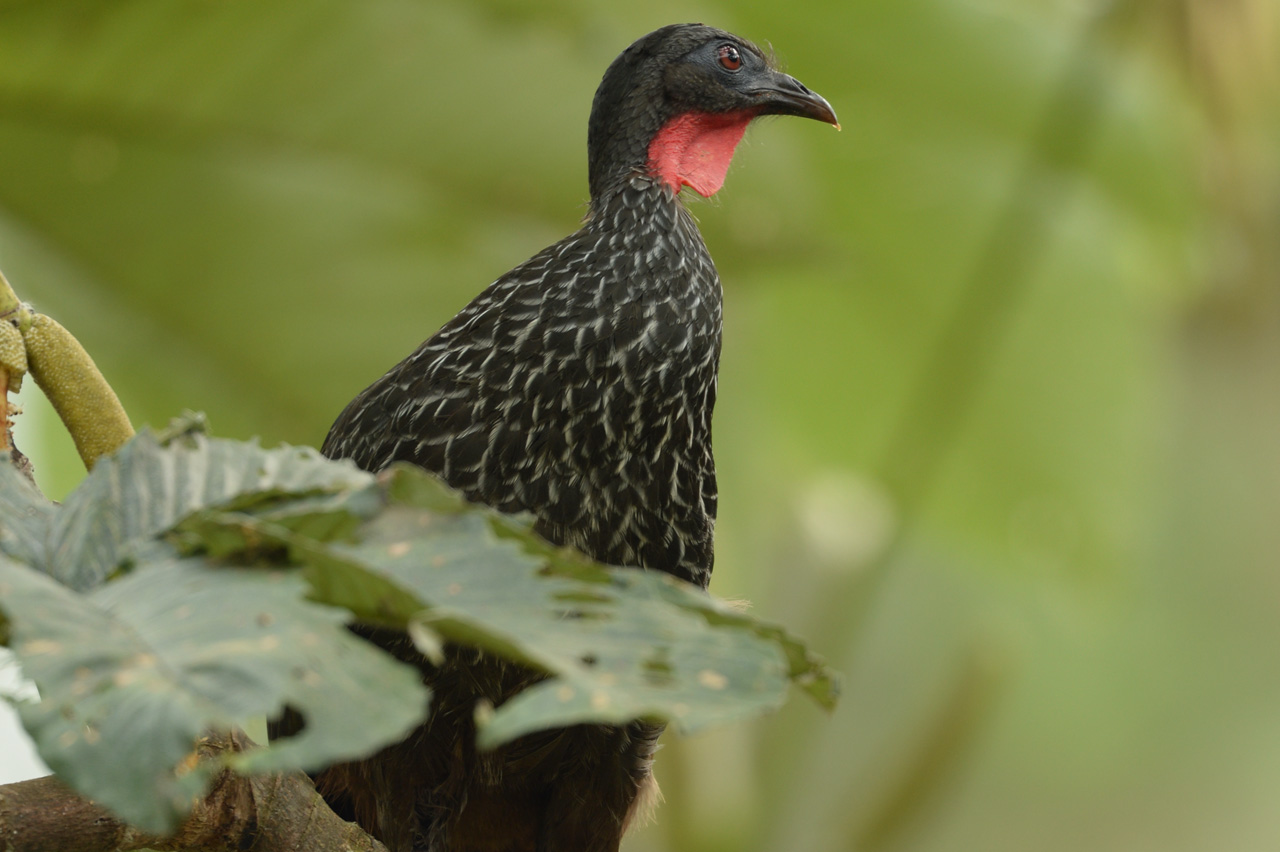Penelope perspicax
The Cauca Guan is a bird from the Cracidae family, endemic to Colombia (it is not found anywhere else in the world). It has mostly dark plumage with brown and greenish tones, along with a striking red patch on its throat, a distinctive characteristic of its appearance. Adults can reach up to 80 centimeters in length and weigh around 1.5 to 2 kilograms. Its diet is primarily frugivorous, supplemented with leaves, flowers, and invertebrates.
It is found in fragmented areas of tropical humid forest in the inter-Andean valleys associated with the Cauca and Magdalena rivers in Colombia. Its ecological role is crucial as a seed disperser, helping with forest regeneration. It achieves this by consuming a variety of fruits and dispersing their seeds through its droppings.
 Photo: "EL PATO" Salcedo / WCS Colombia
Photo: "EL PATO" Salcedo / WCS Colombia
The conservation of this species is essential—not only to preserve local biodiversity but also to ensure the resilience and stability of these ecosystems in the face of environmental and human-driven changes.
Hunting: its main threat
The Cauca guan is classified as Vulnerable (VU) by the International Union for Conservation of Nature (IUCN). This category indicates that the species faces an extremely high risk of extinction in the wild in the near future.
In Colombia, it is also listed as Vulnerable at the national level, mainly due to the fragmentation and loss of its natural habitat—primarily caused by deforestation for agriculture and livestock—and illegal hunting.
Connecting its forests
WCS has been working to protect this species for over 20 years across its range in Colombia.
Research has been conducted on its ecology and distribution, with focused efforts to assess population status in the Otún Quimbaya Fauna and Flora Sanctuary (Risaralda) and in the Yotoco Forest Reserve (Valle del Cauca).
The organization has developed monitoring protocols that have been implemented with the support of local residents and volunteers. It has also promoted restoration actions aimed at connecting the forest fragments where the species is found, helping to reduce population isolation.

Precisely, one of these monitoring efforts, coordinated by WCS in partnership with the Regional Environmental Authority of Valle del Cauca (CVC) and conducted between 2022 and 2023 by students from the National University (Palmira campus), Javeriana University Cali, Icesi University, and the University of Valle, concluded that the presence of this threatened species in the Yotoco Forest National Reserve, located in the heart of the Western Cordillera, increased by 430% compared to 2004.
The Cauca Guan is one of the most affected Colombian birds due to deforestation. It is estimated that it has lost nearly 95% of its forest habitat, according to data from the Red Book of Birds of Colombia.
Translated with AI support